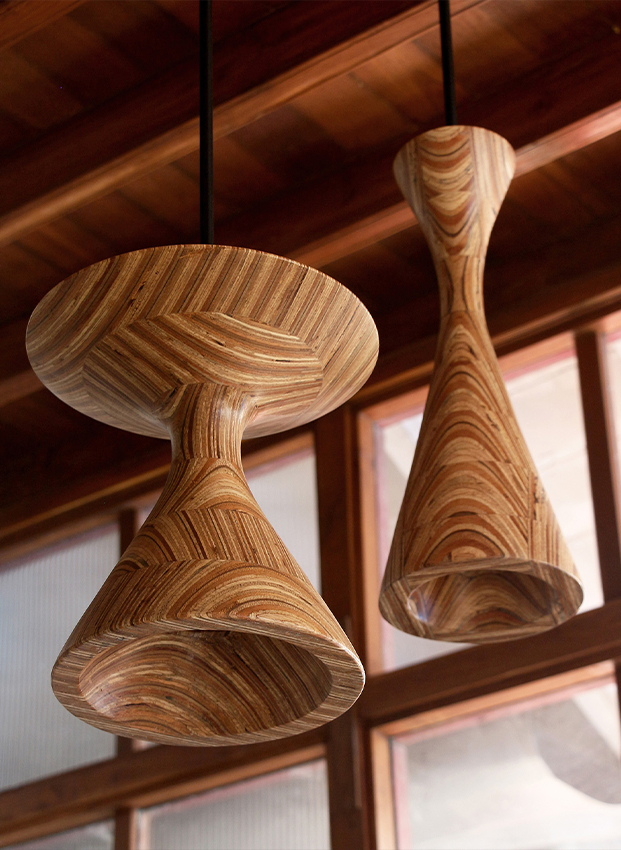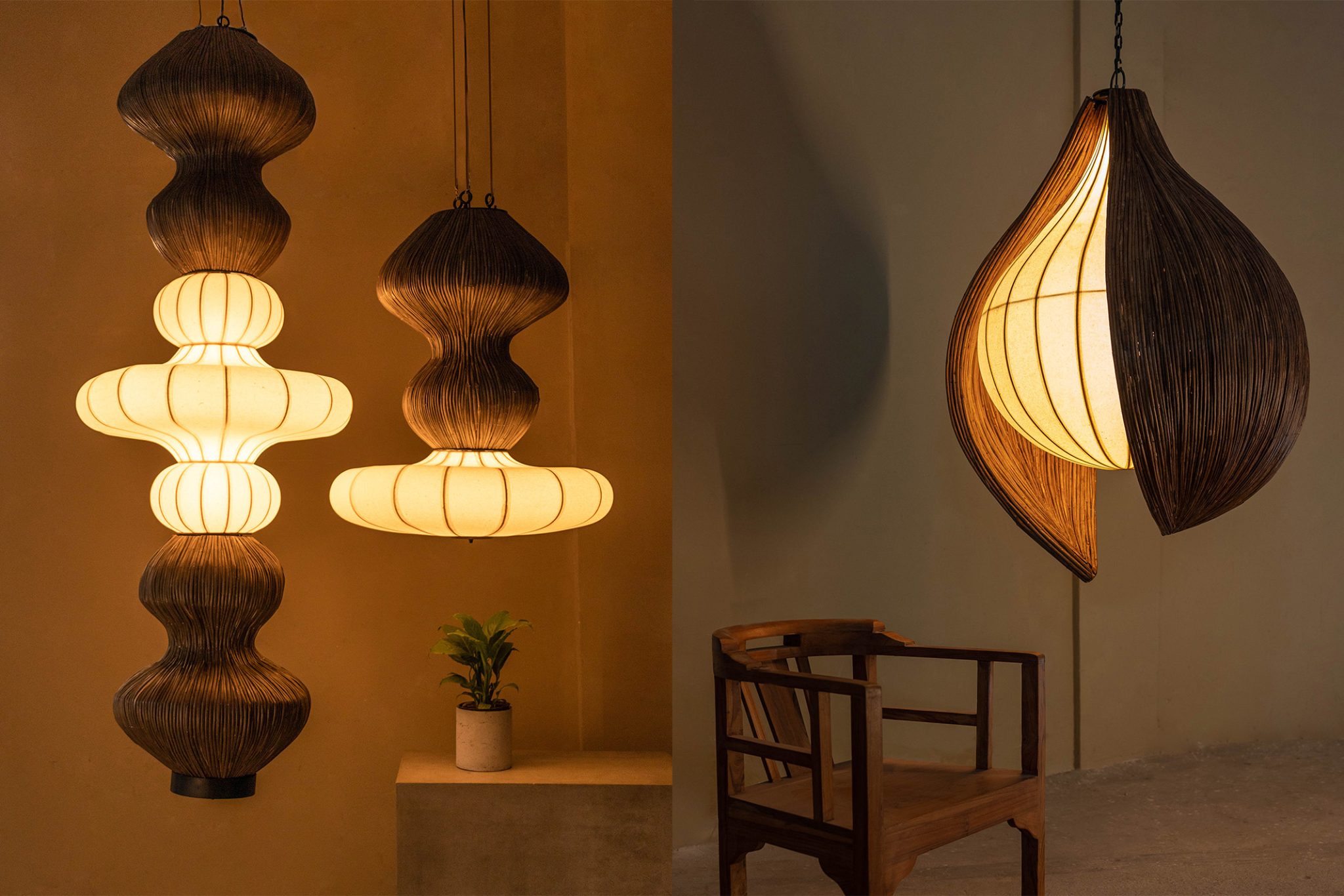The Business Of Antiques With The Golden Triangle’s Douglas Van Tress
The co-owner of The Golden Triangle talks about how his tiny gift shop in Chicago from 1989 grew into two sprawling and highly atmospheric antique stores in Chicago and Chiang Mai.
- 11 Nov '24
- 4:56 pm by Beverly Pereira
Douglas Van Tress had a thing for history, art, and travel for as long as he can remember—a triad of crucial components that led him to quit a consulting job in Chicago and open an antique store. At about the time when he worked a job he didn’t enjoy, he met his business partner Chauwarin Tuntisak whose sister advised him to start his own business. She told him how Italian and French buyers had discovered the wood carving tradition in her village back in Thailand and how the Americans would appreciate it. Van Tress went on to open a tiny gift shop with Tuntisak in Chicago’s River North arts district back in 1989. A few years later, upon realising the demand for antiques in America, the Golden Triangle was born.
Today, Van Tress and Tuntisak run two antique stores, one in Chicago‘s Grand Avenue industrial neighbourhood and the other in a sprawling complex of modern structures in Hangdong, Chiang Mai. Both stores accommodate workshops where antiques from as far as China, India, Thailand and France are restored to their former glory. The Chiang Mai store started as a small workshop in 1999 to restore and ship pieces from Thailand and China to the Chicago store.
Van Tress’s anecdotes are ripe with observations on the behaviour of antique buyers of today. In an interview with Design Pataki, the antique shop owner talks about scouring for rare finds in Jodhpur, buying land in Thailand, and how he enjoys crafting immersive experiences at his stores.
Also read: Sourcing Secrets With Ritu Nanda: On Vintage Finds And Tropical Aesthetics

Left: A Hungarian recreation of the iconic 1960s Brazilian Zalszupin and an Art Deco club chair from France sit under a 1960s Venini chandelier. Right: A vintage armchair from Budapest and Willy Guhl diablo planters from 1960s Switzerland are set against Chinese gilded gold carvings from the 1800s and Indian cement moulds. (Image Credits: The Golden Triangle Chicago)
DP: Where does your love and passion for selling antiques stem from?
DVT: My love for antiques came not from being taught, but from feeling, touching, and questioning why a piece is heavy and why this old jar looks so interesting. My parents lived in a 1950s American ‘Brady Bunch’ house which meant that everyone wanted the latest cars, to live in the future. It was strange. I started liking everything old. Over time, I chanced upon some British colonial items, abandoned furniture, you know, with roots in the Burmese Empire. I didn’t know anything about antique furniture or the value of it. I just knew I liked it. It looked good and was all solid, whereas a lot of American pieces made 100 years ago were already using veneer, plywood, and synthetic materials. Those American things didn’t speak to me. But somehow, on my travels, I would touch this stuff in Asia, and know that my culture was different.
Also read: DP Curates: 5 Modern Credenzas And Consoles On Our Radar Right Now

A 19th-century Louis XIII walnut armchair from Provence, an 1800s France terracotta pot, and an oakwood table from 1960s France are set against a monumental wooden wall sculpture with vintage elements from Havelis and a Louis XIII “A Deux Corps” walnut cabinet from 18th-century France. (Image Credits: The Golden Triangle Chicago)
DP: Can you take us through The Golden Triangle store in Chicago?
DVT: At our Chicago store, we contrast pieces from different places. So, I can have, for example, a towering Naga tribe totem from Northeast India. Next to it, might be a Louis XV French armoire. And in front of it, a 1970s chrome coffee table from France. I get to share my love for antiques from India, Japan, China, Thailand, France and Hungary inside a lofty space set in an old industrial neighbourhood. During the pandemic, we moved our location from closer to downtown Chicago to this up-and-coming industrial area, which is very old, but the factories are gone and the buildings are still here. I bought one of these old brick buildings with high ceilings. The first thing I did was clean up the floor, add track lights and, most importantly, nice speakers. Sometimes when everyone goes home, if I’m the last person to leave, we have some indirect lights filtering in from outside, and it’s all mysterious in there. I love to take pictures then.
Also read: The New Wave Of Indian Craftsmanship: Exploring India’s Furniture Legacy Across Its Four Corners

DP: How did your Chiang Mai workshop turn into the stunning store that it is?
DVT: The Chiang Mai workshop turned into an actual store back in 2019 when we built three modern buildings, designed by architect Techinphat Khachonphurithanakul. They have high ceilings with natural ventilation and no need for air conditioning. We cut holes in the ceiling to let light filter in at various times of the day—like natural spotlights. The whole concept is inspired by the forest, where it’s dark underneath big trees but there will be shafts of sunlight coming through. I thought it would be a fun way to display the antiques against the exposed cement walls. We envisioned a zero-carbon building with the basic use application of electricity for the evenings. We also wanted to keep the architecture modern to showcase the antiques against a contemporary backdrop. We have Chinese, Indian and Thai pieces for sale here. We also continue to restore antiques here.

DP: When did the Golden Triangle start buying in India?
DVT: Interestingly, the India connection happened at our Chiang Mai workshop. A dealer from Jodhpur had come to Chiang Mai to sell things around 25 years ago and chanced upon our workshop. He instantly trusted us enough to send us a shipping container full of Indian architectural elements to sell for him. That’s how we started ordering conventionally. Then, my partner’s brother Veerachai Tuntisak started going to India to buy architectural elements from building sites. Veerachai is crucial to our Thailand operations, and is the director and partner of the Golden Triangle Hang Dong.
Also read: 3 New Stores Elevating The Retail Experience Through Spatial Storytelling

The pair of 18th-century winged limestone horses once graced the entrance to a Sicilian palazzo. The sheep leather art deco chair dates back to the early 1900s, from France. (Image Credits: The Golden Triangle Chicago)
DP: How do you uncover the origin and veracity of antiques?
DVT: Sometimes pieces come to you with what we call provenance. I go to electronic auctions in Chicago, even though I find travelling to buy more fun. If a piece at an auction says it’s from the Smithsonian collection, I can view it in person or electronically and look at documents. That’s all good. Now, a lot of the pieces I find in Asia do not come with any provenance. So, we must go back to looking. For many of the pieces I find, whether in India, Thailand, China or even France, you need to look at it purely for shape, proportion, and any new parts that don’t match the skin of old parts. Is it a difficult shape? Can we see the wood grain? Is it tight-grain or open-grain? Is it a rare hardwood? We can ascertain all of this without provenance. In China, people are passionate about buying Chinese objects. In the US, India is the new flavour. People are just getting to know it. They don’t know much, because they’ve been buying objects from China for a long time now at the auction houses.

DP: The Golden Triangle in Chicago is known for its immersive events. Tell us about the most recent one.
DVT: I’d been selling Indian pieces for many years, you know, beautiful doors from Rajasthan, door frames turned into mirrors, some trunks, and Naga day beds, proudly telling my customers they were from India. But I had never been to India. I was always stuck in China. I began to make my career on travels to Southeast Asia and China. It once struck me that I was trying to describe to a friend what I had seen when I got back from India, and realised that my very educated and travelled friend didn’t have a clue what an Indian mansion looked like.
When I say Italian villa or French chateau, everyone gets the picture. But nobody knew about Indian Havelis. That, to me, was outrageous—also from the business aspect. I saw the ‘Grand Haveli event’ as an opportunity to be the first person in a big city like Chicago to put a whole bunch of architecture together and go a little crazy. We brought down a whole bunch of impressive pieces and Indian architectural elements from my Thai store, and I said, let’s go crazy.
DP: Who, according to you, are the current and future antique buyers of the world?
DVT: The buyers of the world who are buying the most antiquities are going to be Asians, and they’ll be East Asians and South Asians. Now, the next big group of billionaires coming up in the world very rapidly is India. They’re going to be buying things from other countries. But they’re going to begin with buying some Indian artefacts, bringing back pieces they know a lot about from the West to India. But the Indians are also going to buy Chinese wares, and they’re going to buy European paintings. Great museums will be built, you know, in richer Indian cities filled with global antiques. It was always the New Yorkers buying the most. Now it’s the Japanese. Then it was Chinese. And I think, you know, next up, is India.
330,000 Indians live in the Chicago region, so I have Indian friends coming in every day, often second-generation. They say everything is modern in our house. They want to see what life looked like before. Sometimes the older generation comes in and says their house is modern, but they want their children to have a connection to India.
Also read: Renowned Gallerist Sundaram Tagore On Buying Art In A Virtual Art World

DP: Tell us about some interesting recent purchases.
DVT: I visited India and Thailand on my most recent trip to Asia. When I was in Ahmedabad, I spotted a modern piece—a brass tree like the mythological tree of life. It was about 70 inches tall and quite expensive. I thought to myself that some modern person in their minimalist environment needs this in their life. While I was with the same dealer, we looked at old columns from different Havelis, but I was also drawn to a pair of Art Deco lounge chairs—big-scale lounge chairs with curvaceous lines. They turned out to be authentic pieces from the 1930s made with teak about three-eighth of an inch thick and came from a Parsi family in Delhi.



























